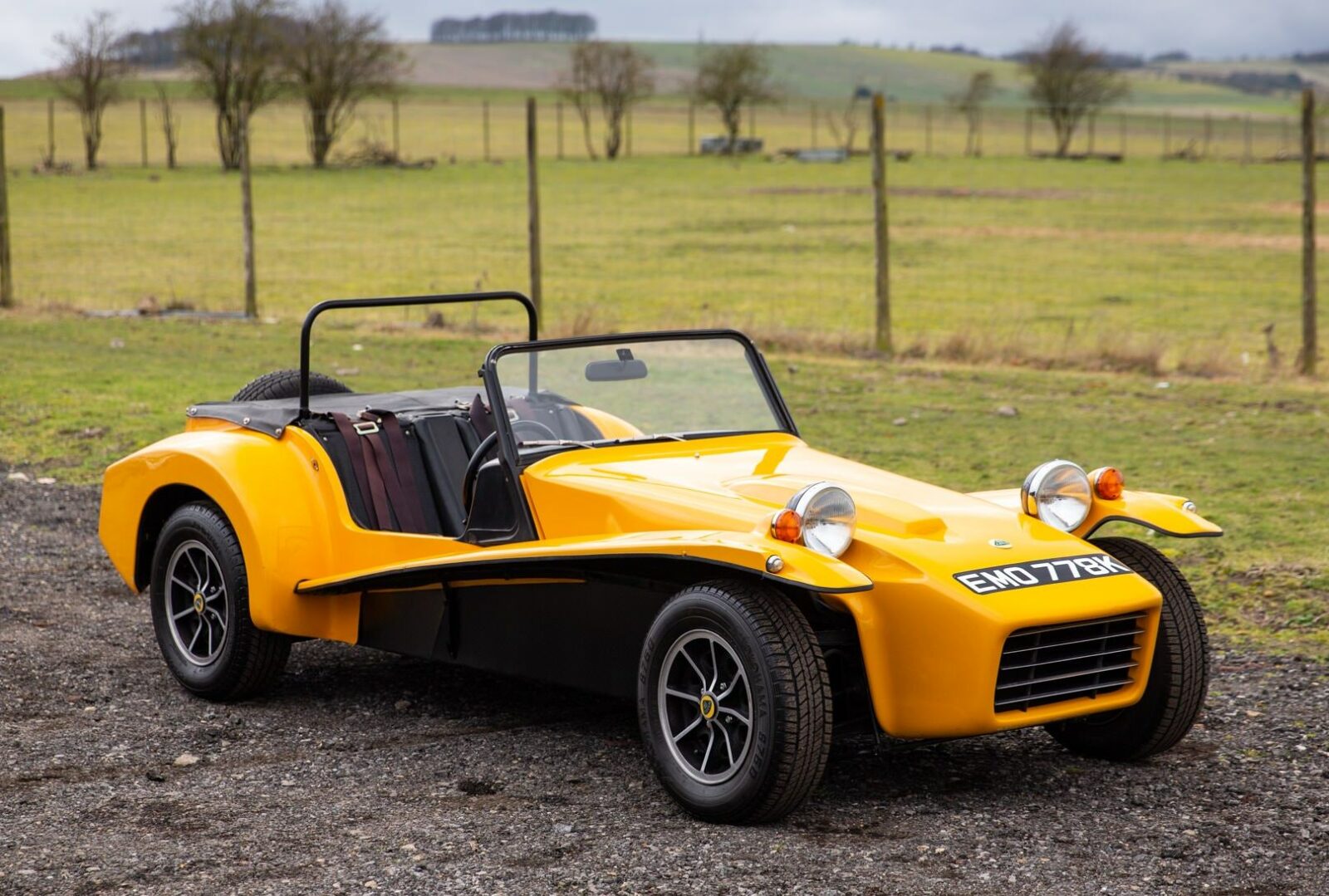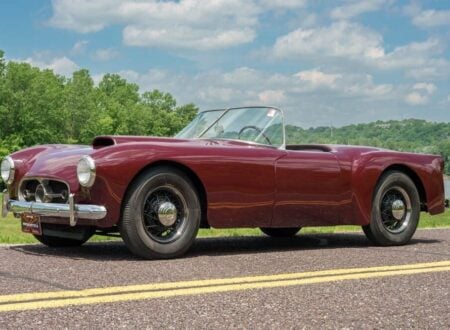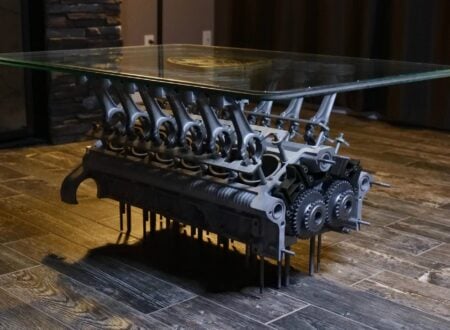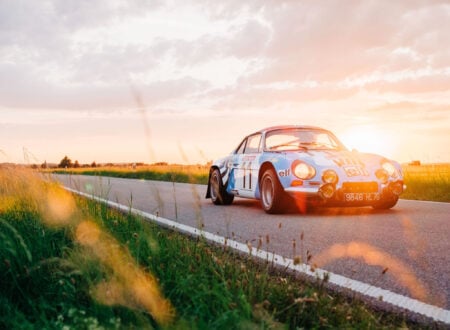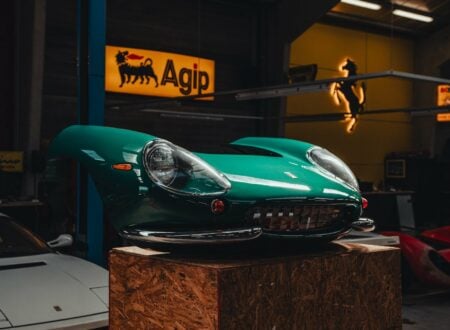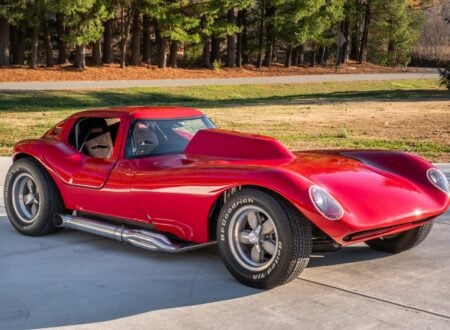This is an original Lotus Seven Series 4, it’s a member of the final generation of Sevens built by Lotus in the 1970s before Caterham took over the mantle, and today the Series 4 cars are prized by those who need a little more interior space than is offered on the Series 3 and earlier vehicles.
This Lotus Seven is powered by the legendary Kent crossflow inline-four in 1.6 liter form with a Burton race head, the engine has been built to fast road specification and power is sent to the rear wheels via a 4-speed manual transmission.
Fast Facts – The Lotus Seven Series 4
- The Lotus Seven was first introduced in 1957 by Lotus founder Colin Chapman as a lightweight, affordable sports car for racing and enthusiast road use.
- The Seven’s design was inspired by the earlier Lotus Mark VI and the clubman cars of the era, it featured a tubular steel spaceframe chassis and a lightweight fiberglass body.
- The Series 1 Seven was powered by a 1.1 liter Ford engine with 36 bhp, it weighed just 725 lbs, and subsequent models from Series 2 up to Series 4 evolved to feature more powerful engines and improved handling.
- The Series 4, introduced in 1970, marked a departure from earlier Lotus 7 models, featuring a wider body, improved amenities, and an optional Twin Cam engine capable of producing up to 120 bhp.
- The Lotus 7 remained in production until 1973 when Lotus sold the rights to the design to Caterham, who then kept the model in production non-stop to the current day – making it one of the longest-lived production car model lines in history.
The Origins Of The Lotus Seven
The Lotus Seven was first introduced in 1957 by Lotus founder Colin Chapman. Chapman’s idea was to create a lightweight, nimble sports car that could provide an engaging driving experience while being affordable for the average enthusiast. The car’s design was inspired by the clubman racers of the day and the earlier Lotus Mark VI and it was offered in both kit form and as a turnkey car.
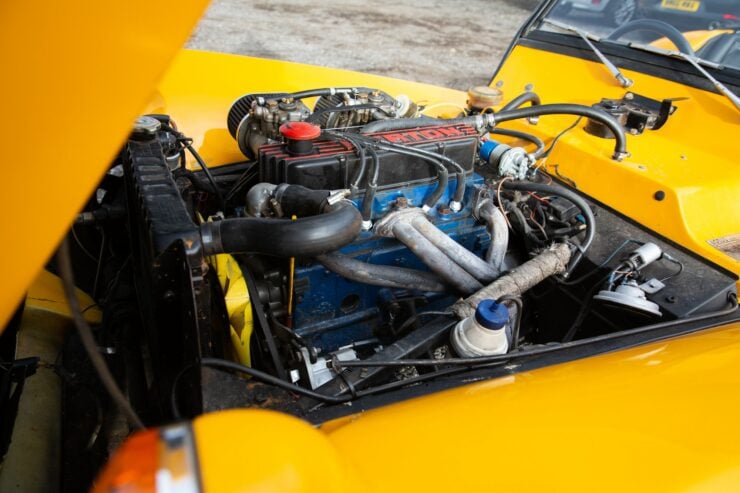

The kit option would be the most popular, vastly outselling the turnkey car as kit cars at the time avoided the automobile purchase tax which was no insignificant. Interestingly, the law stated that kit cars couldn’t be offered with assembly instructions, an issue that Chapman addressed in his own unique way by offering detailed disassembly instructions that the kit builder could follow in reverse to build their car.
Series 1 Through To Series 4
The first Lotus Seven, also known as the Series 1, was powered by a 1.1 liter Ford Sidevalve engine producing 36 bhp, and the car weighed just 725 lbs. Its lightweight design was classic Chapman, with a tubular steel spaceframe chassis, a fiberglass body, and a simple cockpit with only the bare necessities.
The Seven was an instant success, praised for its agility, speed, handling, and its affordable cost. In 1958, Graham Hill drove the Lotus Seven factory demonstrator to victory in a race at Brands Hatch, solidifying the car’s reputation as a highly-capable racing machine in the right hands.
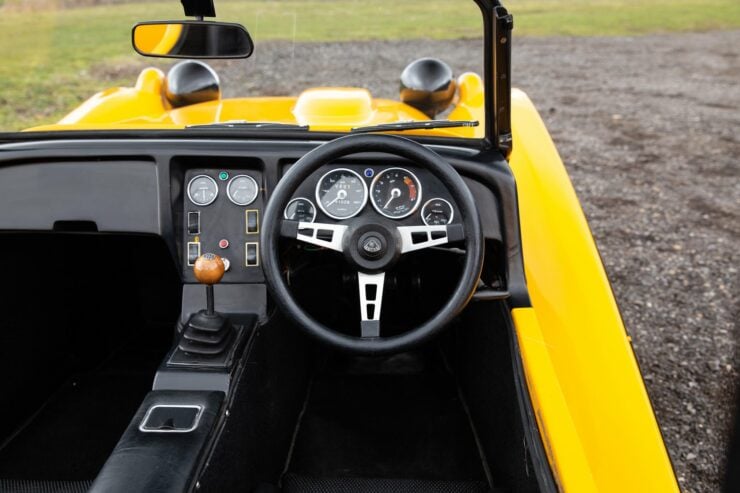

Over the years, the Lotus Seven evolved through various iterations from Series 1 through to Series 4, each with its unique features and improvements. The Series 2, introduced in 1960, featured a stiffer, simpler chassis design, revised suspension, and a more powerful engine.
The Series 3, released in 1968, was most commonly powered by the 1.6 liter, inline-four cylinder Kent crossflow engine. The Series 3 cars were also produced under license in Argentina, with over 50 made, and the model would be reintroduced in modified form by Caterham after the Series 4 proved less popular than anticipated.
The Series 4, introduced in 1970, marked a significant departure from the earlier Lotus Seven models. The Series 4 was designed to be more comfortable and practical than its predecessors, with a wider body and improved amenities. It also featured a more powerful engine, capable of producing up to 120 bhp, making it faster than the previous Lotus Sevens.
Despite its increased comfort and convenience, the Series 4 retained the classic Lotus Seven design elements, such as its tubular spaceframe chassis and lightweight fiberglass body. As noted higher up, the car was available in kit form or as a fully assembled vehicle, making it accessible to a wider range of enthusiasts.
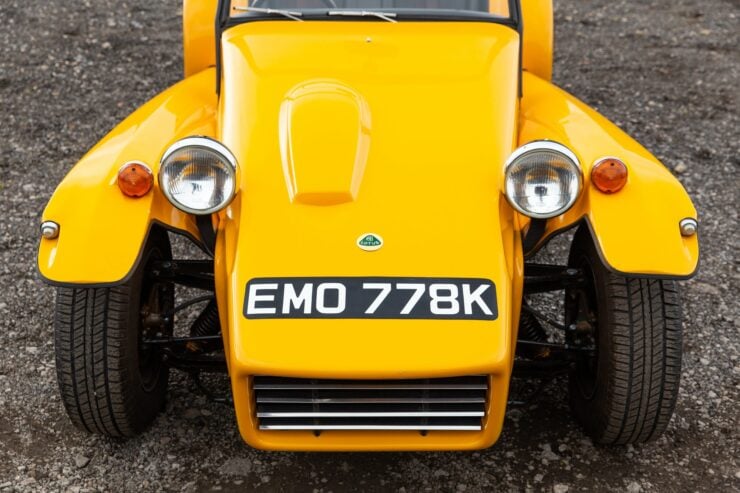

The End Of An Era + The Arrival Of Caterham
The UK joined the European Economic Community and adopted its automotive tax systems, as a result the kit car loophole was closed and the Lotus Seven kits lost their cost advantage. It was also around this time that Colin Chapman was seeking to advance Lotus and move it away from its kit car image and into a more refined sector of the automotive marketplace.
As a result of these two factors, Lotus decided to discontinue the Seven in 1973. One of the largest Lotus Seven dealers in the UK was Caterham Cars run by Graham Nearn. When Nearn discovered that the Seven would be discontinued he struck a deal with Chapman at Lotus to buy the rights to the design and continue its production.
This decision by Nearn would prove to be remarkably clever, he established Caterham Cars and began producing the Series 4 Seven before switching to the more popular Series 3 design. In the years since the Caterham 7 has remained in non-stop production, and it’s been continually upgraded over the decades to keep it competitive.
Today, 66 years after Chapman introduced the Seven you can still buy one in either kit form or as a turnkey car.
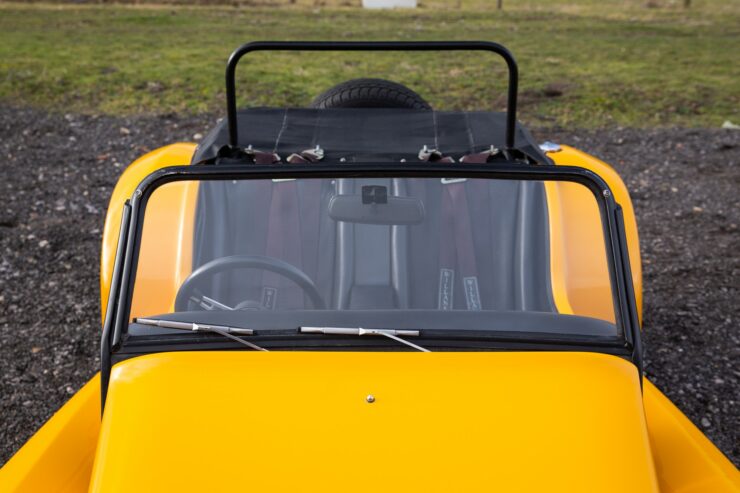

The Lotus Seven Series 4 Shown Here
The Lotus Seven you see here is a Series 4 model, these cars featured a different and more angular body work which was very much on trend in the late 1960s and early 1970s.
The design wasn’t as popular with buyers as the earlier Series 3 however the Series 4 has always been popular with taller and larger drivers, as it was designed with a new chassis that offered more width and length, with more interior space than the earlier Sevens.
This car is finished in Lotus Deep Yellow over a spartan black interior, and it has 13 inch alloy wheels with yellow and green Lotus centre caps fitted with Yokohama S760 tires on the front and S-707s on the rear. Upgraded suspension and brakes have also been fitted, meaning the car is more than capable of dispatching many far more modern sports cars.
Inside the car you’ll find two bucket seats with Willans harnesses for safety, a three-spoke steering wheel, a selection of Smiths dials, a wooden gear knob, and a roll hoop for added safety. The engine is a 1.6 liter Kent crossflow inline-four with twin Weber 40 carburetors, a Burton racing head, a four-branch manifold, and an Ashley competition sports silencer system.
If you’d like to read more about this car or register to bid you can visit the listing here on Collecting Cars. It’s being offered for sale out of Oxfordshire in the United Kingdom.
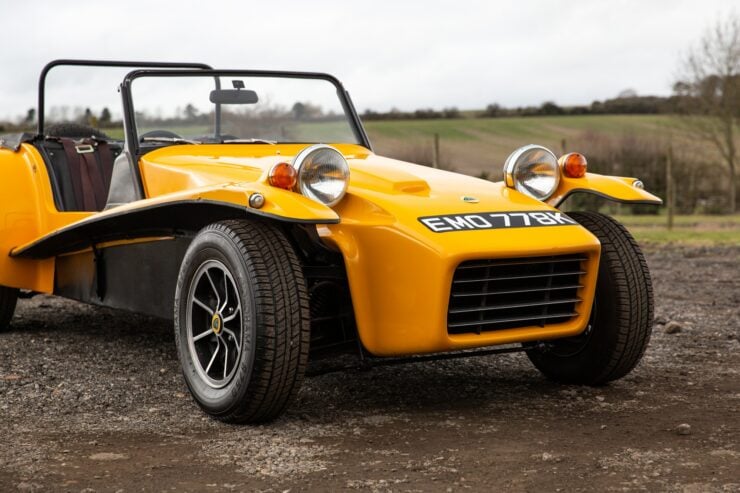
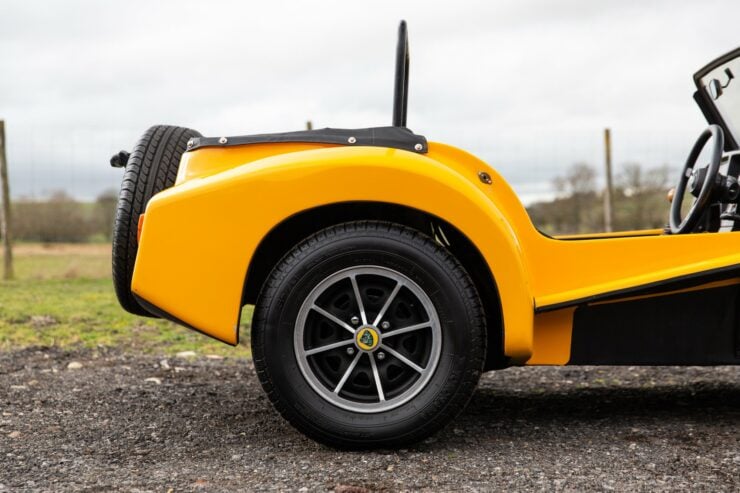
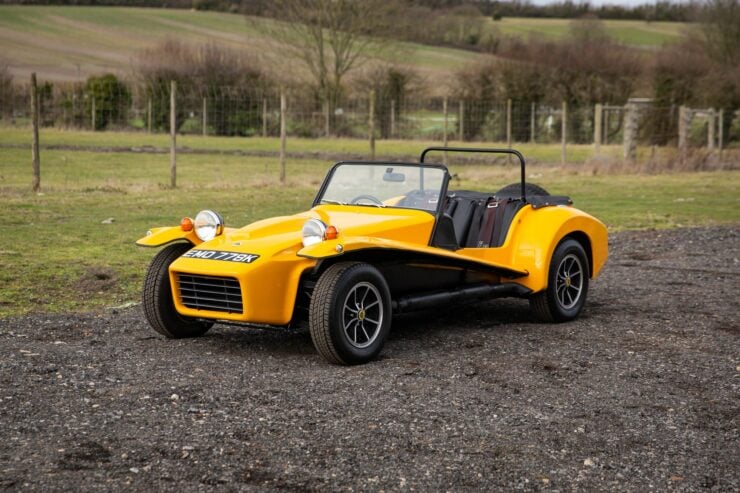
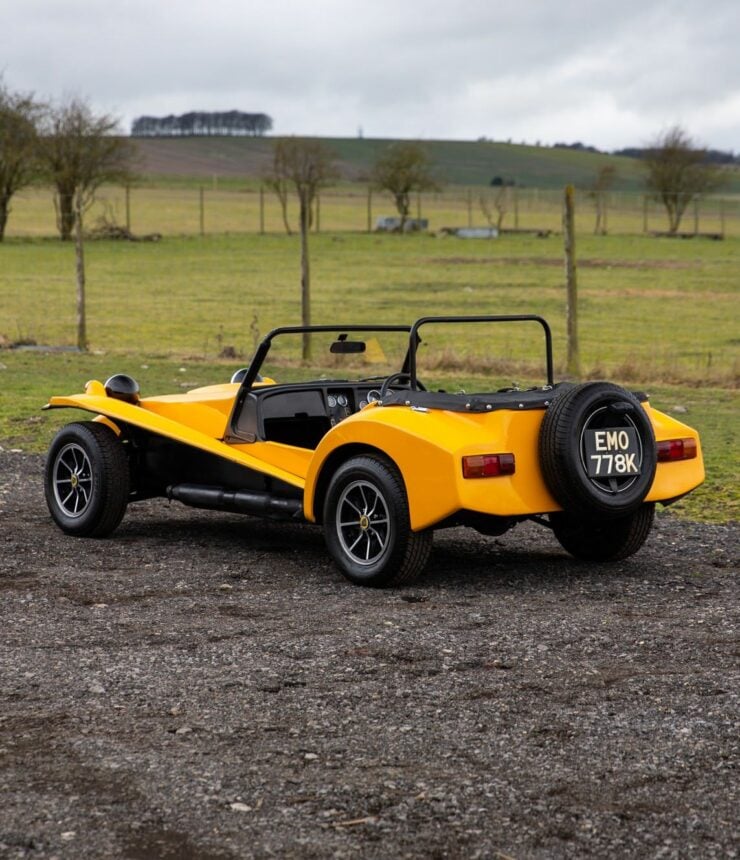
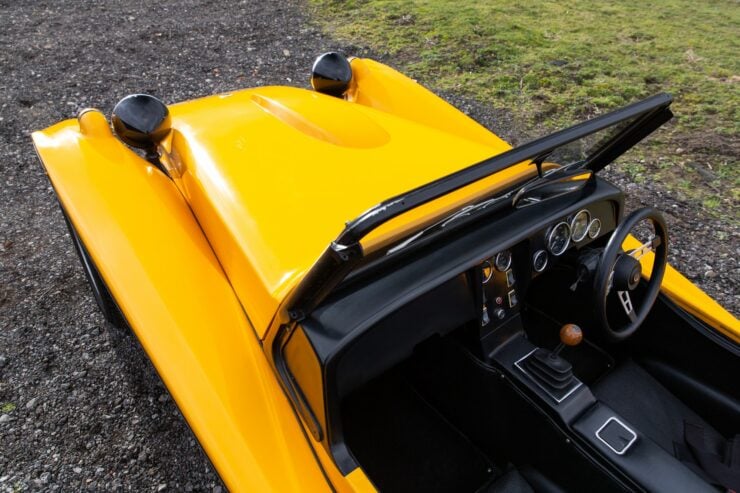
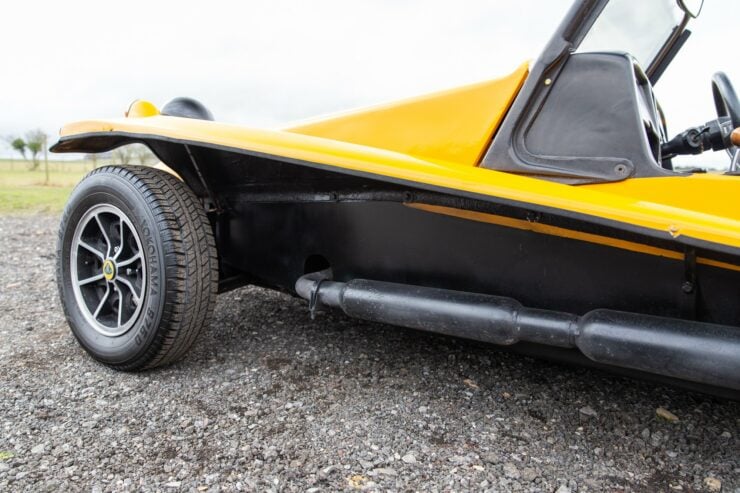
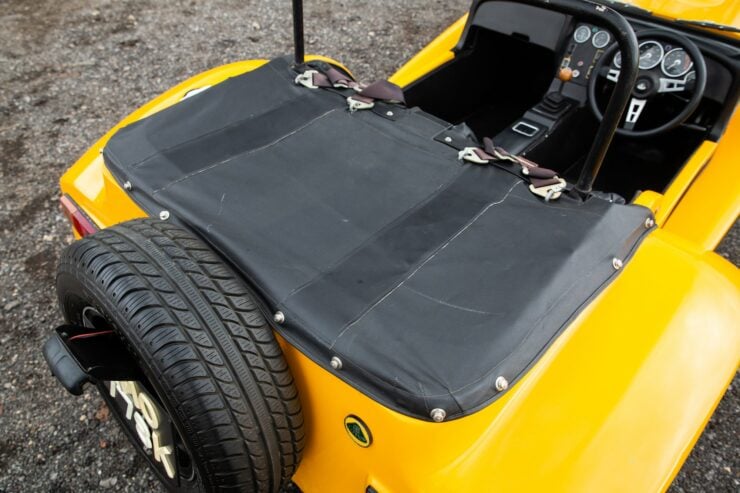
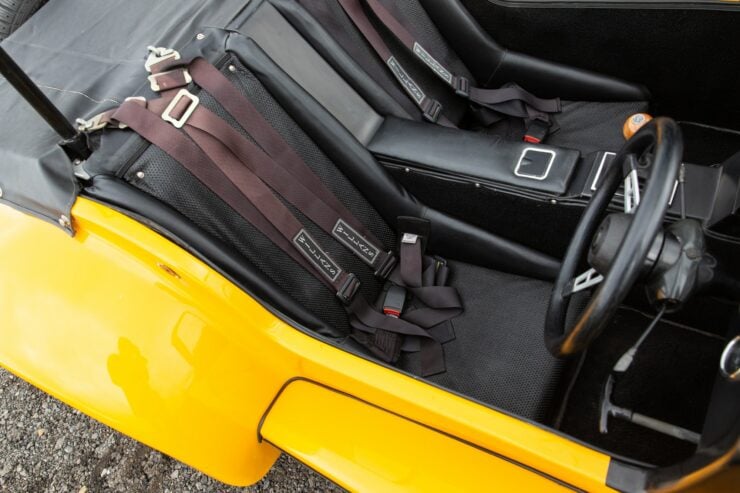
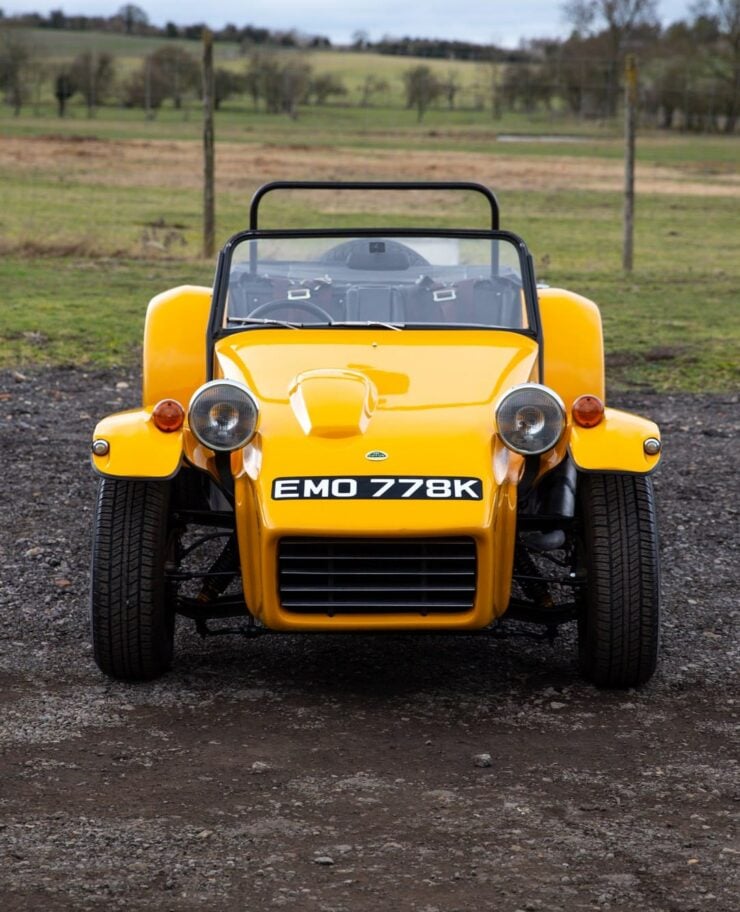
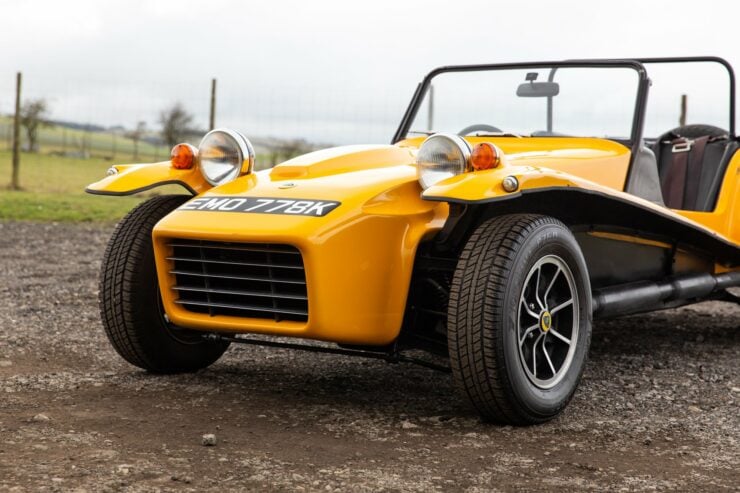
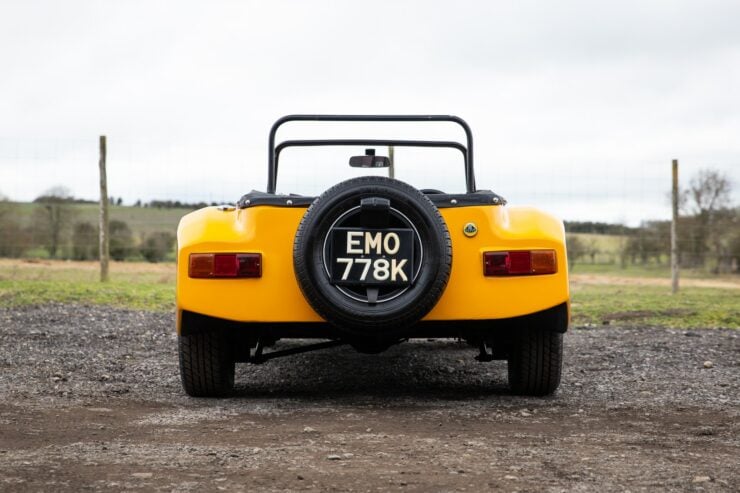
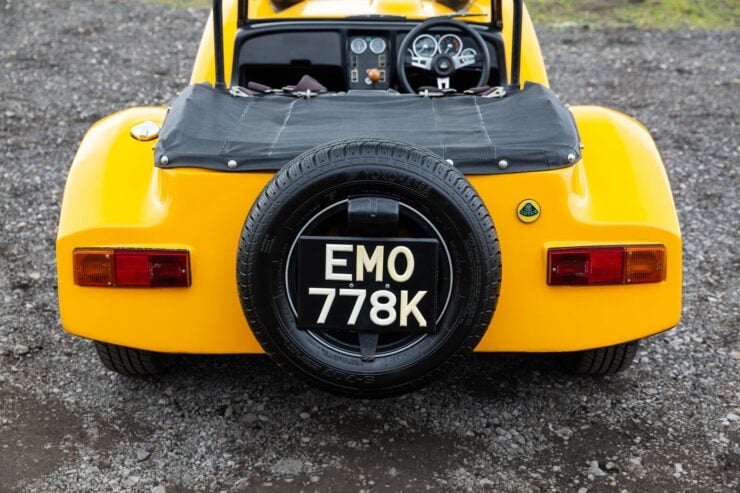
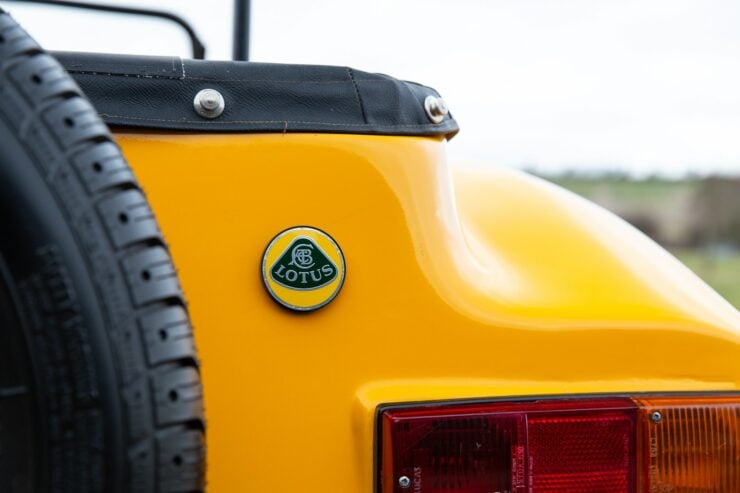
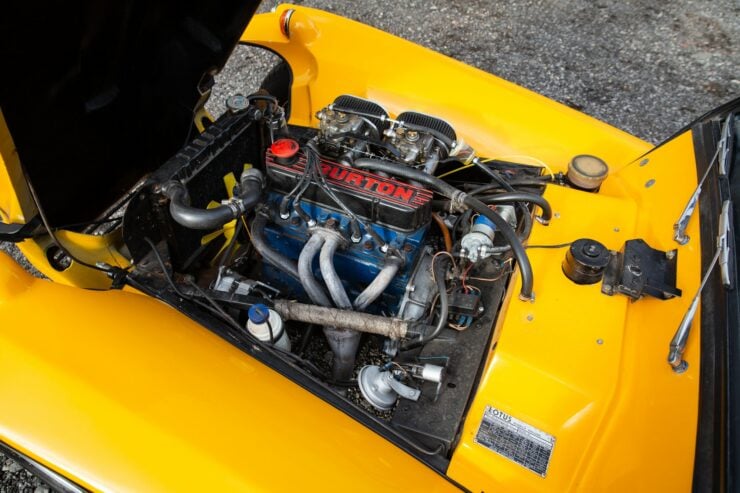
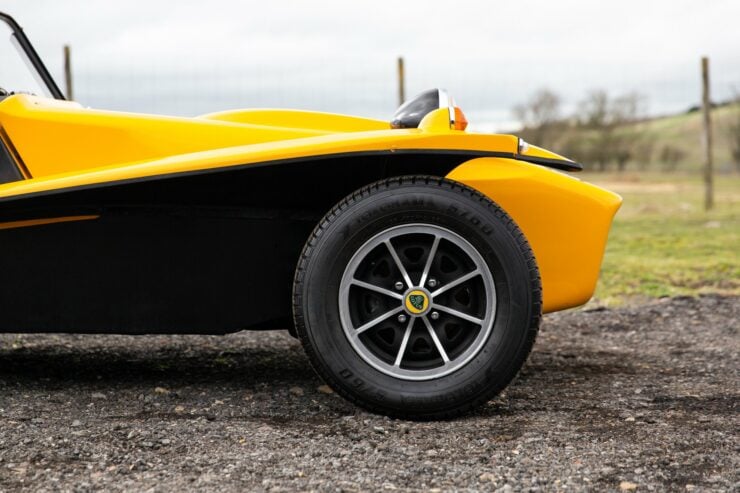
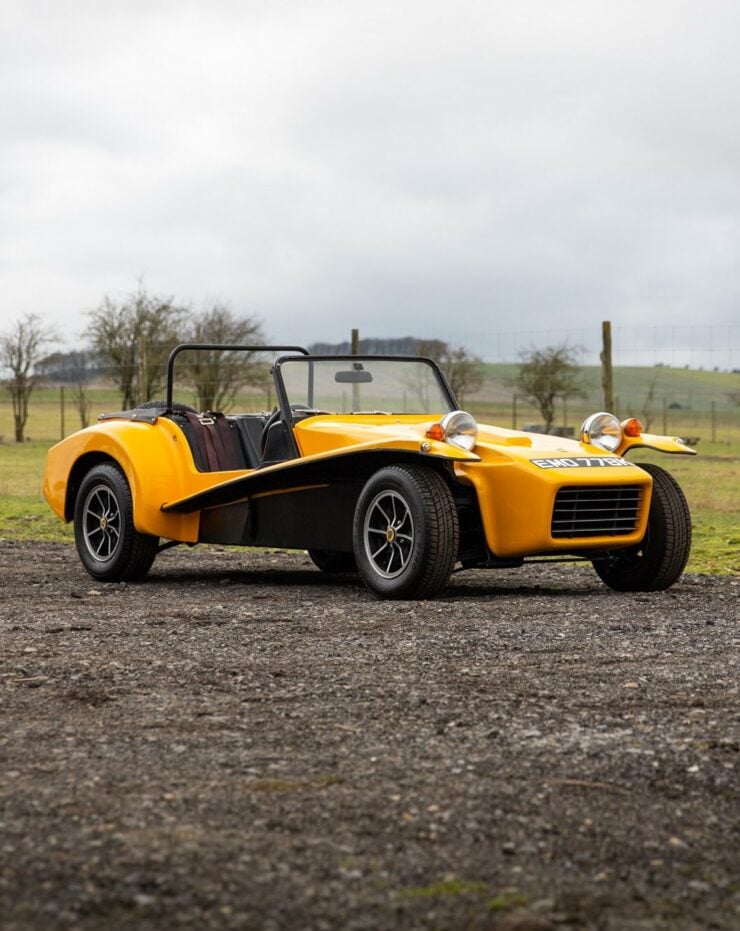
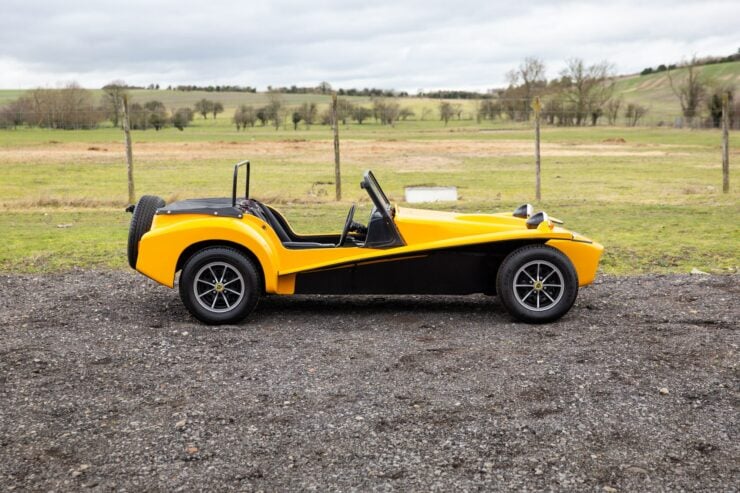
Images courtesy of Collecting Cars

Articles that Ben has written have been covered on CNN, Popular Mechanics, Smithsonian Magazine, Road & Track Magazine, the official Pinterest blog, the official eBay Motors blog, BuzzFeed, Autoweek Magazine, Wired Magazine, Autoblog, Gear Patrol, Jalopnik, The Verge, and many more.
Silodrome was founded by Ben back in 2010, in the years since the site has grown to become a world leader in the alternative and vintage motoring sector, with well over a million monthly readers from around the world and many hundreds of thousands of followers on social media.

